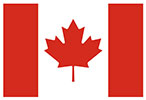Send this article to a colleague
The Cost of Employee Disengagement
Can’t Wait
By Mark Shearon
Continued...
Step three: Take an “elevator” approach to engagement. Once you’ve identified your key employee reengagement targets, segment the rest into different groups depending on the level of engagement you want to build with them. You can picture these levels of engagement like an elevator, starting with awareness, then proceeding to understanding, support, involvement, and, finally, commitment. Administrative employees may only need a simple “understanding” of engagement principals, while your leadership teams should ride the elevator to the top to get to full “commitment.”
Step four: Use the right communication tools. Each stage of the engagement elevator has appropriate communications tools associated with it. For example, use passive communication tools like email, newsletters, broadcast voicemail, or magazines to get across broad “awareness” of your reengagement plan to the entire company. It might be as simple as sending out an email message from your CEO expressing appreciation for a job well done during challenging times, or inviting all employees to log into a new employee intranet. As you move up the elevator, use the right communications tool for each target group: proceeding from all-employee broadcasts to one-on-one meetings with senior managers, to individual rewards and recognition programs for key employees.
Step five: Measure the effectiveness of your program. After your reengagement plan has been in action for several weeks or months, measure it to find out whether it’s working to achieve your desired goals. Use quantitative methods—such as turnover rate, responses to employee satisfaction surveys, recommend-a-friend hiring programs, and so forth—to get a broad overview of whether the program is meeting targets. But remember to also gather qualitative feedback. Ask your key employees directly what they think about their jobs, their level of engagement, and the future of the company, and allow them to give feedback in a confidential manner so they are more open to sharing their true opinions. Hearing this type of feedback may take a thick skin, but it’s crucial to finding out exactly how to improve engagement going forward.
Engagement in Action
When two major financial services companies merged last year, they launched a major employee engagement initiative. They wanted to help employees around the world understand the benefits of the merger, ease concerns over job losses and changes, and challenge the new unified team to build a single, stronger company in the shortest time possible.
At the center of the initiative was a global road show of “town hall” style meetings that invited the maximum number of people to interact with top managers face-to-face. Employees were invited to ask questions either in person or via a confidential form; no questions were off limits. The program was also supported by a wide-reaching online and print communication program. A pre-tour campaign built expectations using everything from posters and banners, to intranets and blogs. Local leaders invited employees to submit questions and ideas before the road show was in town. Employees who couldn’t be present at the town hall meetings were invited to view them via the Web, and an intranet site allowed employees to pose questions to executives on an ongoing basis, watch presentations, and get more information about the merger.
Quantitative and qualitative feedback gathered throughout the program was incredibly positive. One year after the merger, during a significant downturn in the financial services sector, both revenue and operating profit had significantly increased from the same period a year earlier. MW
Mark Shearon is executive vice president of TBA Global (www.tbaglobal.com), an engagement marketing agency that connects brands and people through a unique combination of education, events, entertainment, and experiences. TBA Global helps many of the world’s top brands build deeper employee engagement and maximum brand recognition through a proprietary methodology that links strategy with action. For more information: mashearon@tbaglobal.com

